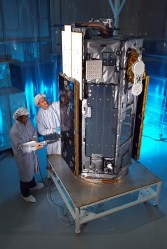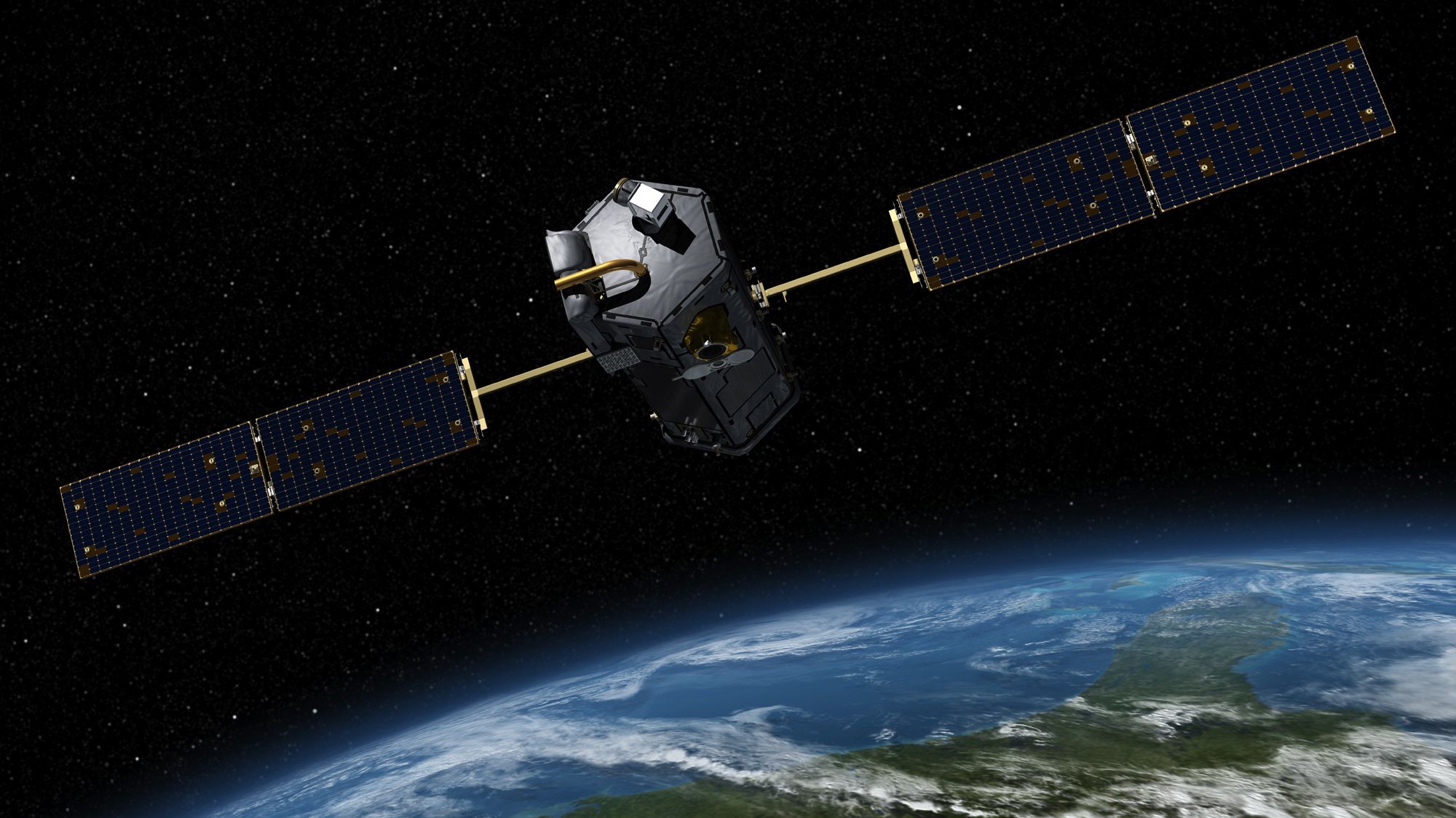The last time NASA tried to launch a satellite to measure carbon dioxide levels from space, within minutes the $273 million project plopped into the Southern Ocean (oops). Tomorrow they’re giving it another go. The Orbiting Carbon Observatory (OCO)-2 will blast off at 2:56 a.m. PDT from the Vadenburg Air Force Base in California. This time, it’ll hopefully make it to 438 miles above the planet, where it will be in a prime position to obsessively watch Earth breathe.

JPL/NASA
Which sounds stalker-esque, but don’t get too creeped out. OCO’s main goal is to figure out where, exactly, atmospheric CO2 currently comes from — and, more mysteriously, where it ends up. While fossil fuel emissions have tripled since the 1960s, levels of atmospheric CO2 have risen by less than a quarter (but unfortunately that’s still enough to cause big global change). That’s because somehow our oceans and plants have, on average, been able to keep pace with absorbing half of the total atmospheric CO2. But scientists still don’t know a lot about the dynamics of how this is happening, which leaves them wondering: How long can we expect these carbon sinks to keep sucking the stuff down?
“Understanding what controls that variability is really crucial,” OCO project manager Ralph Basilio said at a press conference in Pasadena. “If we can do that today, it might inform us about what might happen in the future.”
The satellite will carry a 300-pound instrument that measures the colors of sunlight that bounce off the earth, because that color intensity indicates how much CO2 the light beams through. While it will only take in a square mile at a time — an area smaller than New York’s Central Park — scientists say that it will tell a much more complete story of the comings and goings of atmospheric CO2 than the 150 land-based stations from which they currently get their measurements. It will collect 24 measurements a second, which means a million a day, but scientists predict that only a tenth of them (100,000/day) will be clear enough of clouds to be usable.
If they can get it up there in the first place, that is. Ground control to Major Tom, take your protein pills and put your helmet on …


